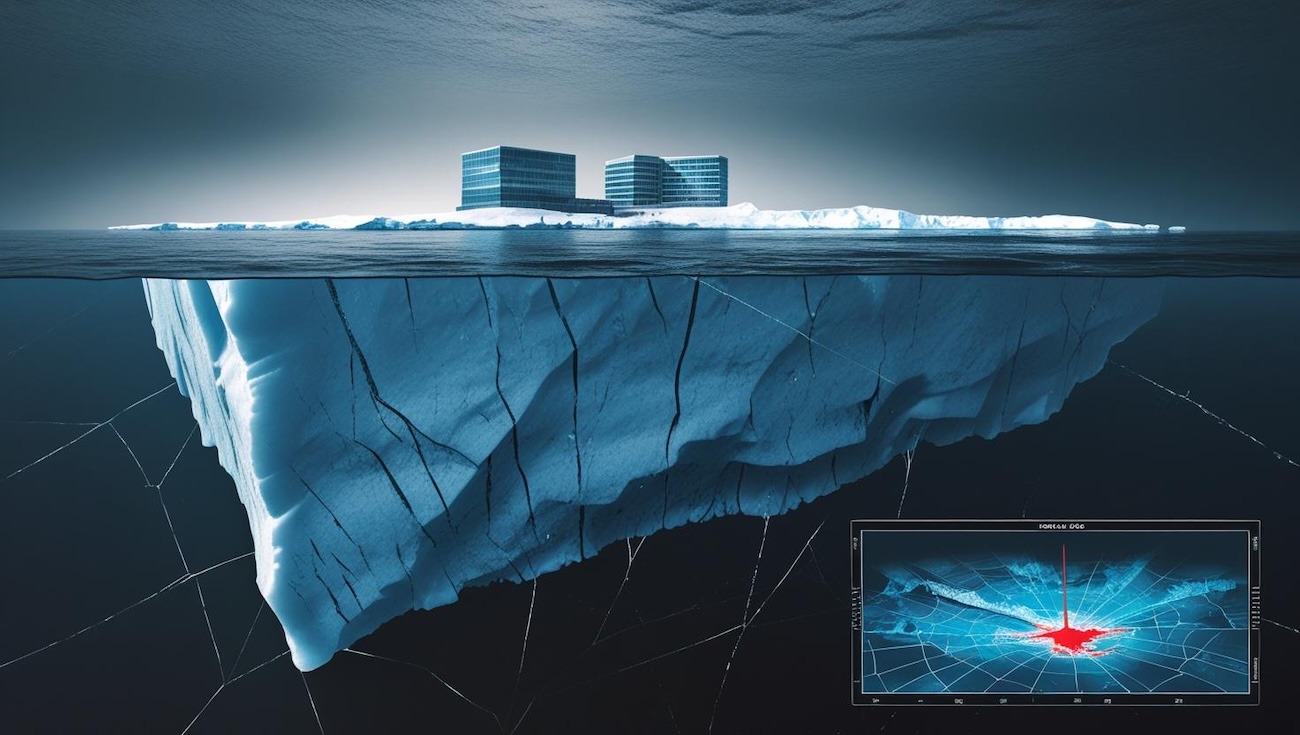Something feels off. You can’t quite articulate it – the metrics look okay, the meetings keep happening, and no one’s actively on fire – but somehow, it all still feels… off. You ask for clarity and get served 47 slightly contradictory answers, a spreadsheet so bloated it needs its own server, and a Slack emoji that says “we got this” with the same energy as a shrugging emoji at a plane crash.
That’s exactly why I use the Titanic Diagnostic – a sharp, surface-level scan developed by the Reinvention Academy, where I trained as a Certified Reinvention Practitioner. It’s designed to give senior leaders a real-time lens into how change-ready your business truly is. It’s not a vibe check. It’s a structural integrity test – for your culture, your systems, and your leadership wiring.
The Titanic Didn’t Sink Because of One Iceberg
Let’s start with something uncomfortable: your business might be the Titanic. And I’m not saying it’s doomed. I’m saying it might be gliding toward an iceberg with no one in the crow’s nest – and half the leadership team convinced there is no iceberg because the dashboard says “all green.”
What makes the Titanic metaphor so devastatingly apt is that it wasn’t just a ship. It was a monument to human achievement – the largest man-made moving object of its time – launched with a PR campaign that boldly declared it “unsinkable.” The media lapped it up. Investors cheered. First-class passengers packed extra diamonds. And the ship sailed off with more ego than actual safety planning.
But the iceberg? That was just the final act in a long, avoidable play.
Here are just a few factually accurate system failures that helped turn a marvel of engineering into a maritime tomb:
- No binoculars in the crow’s nest. They were locked in a cupboard – and no one had the key.
- Lifeboats? Not just too few. The Titanic was short by 28 lifeboats, meaning half the people onboard never had a chance.
- Radio systems? Overloaded with cocktail party reservations and social messages from wealthy passengers. And despite receiving six or seven iceberg warnings from nearby ships, they were either delayed, deprioritized, or flat-out ignored.
- The captain? Asleep in his cabin. First Officer Murdoch was steering when the iceberg hit – not that it mattered much, because…
- The lookouts saw the iceberg with just 37 seconds to react. That’s barely enough time to yell “ICEBERG!” let alone steer a floating skyscraper out of harm’s way.
- Watertight compartments? A brilliant idea – fatally flawed in execution. Once one filled, the water spilled into the next like a cascading cocktail party of doom.
This wasn’t a one-off oversight. It was a symphony of arrogance, distraction, poor communication, and wilful denial of clear signals – all propped up by a brand campaign that insisted everything was fine.
Sound familiar?
Enter the Titanic Diagnostic: A Sanity Scan for System Readiness
That’s why I use the Titanic Diagnostic, created by the Reinvention Academy. It’s not a full-blown audit. It’s not 78 slides of consultant jargon. It’s a fast, brutally honest scan that helps leaders figure out if they’re built to:
- Anticipate Change – Can you spot danger before it hashtags its way into your quarterly review?
- Design for Change – Do your teams flex under pressure – or snap like frozen windshields?
- Implement Change – When you say “Let’s do it,” can your people actually pull it off?
At its core, the Diagnostic is designed to surface what the Reinvention Academy defines as Titanic Syndrome:
“A corporate disease in which organisations facing disruption create their own downfall through arrogance, excessive attachment to the past, or inability to recognise new and emerging reality.”
It reveals where you’re resilient, and where you’re at risk. And yes – if it stings a little? That’s the point. Because you can’t fix what you won’t face.
Take the quiz. If you’re safe – great. Have a toast. But if the results show you’ve got your blinders on while heading full speed into chaos, let this be your first course correction through the field of icebergs.
You have nothing to lose by taking it – but you might just lose everything by ignoring it.
And if you know someone who’s already deep in the iceberg field, send this to them. It might just be the thing that saves their business.
You Don’t Have 37 Seconds. You Have… Maybe a Quarter.
Back in 1912, the Titanic had just 37 seconds between spotting the iceberg and hitting it. In modern business? You might have a quarter. Maybe less.
According to McKinsey, the average lifespan of a company on the S&P 500 has shrunk from 61 years in 1958 to less than 18 years today – and it’s still falling.
We operate in a VUCA world – Volatile, Uncertain, Chaotic, and Ambiguous – and now we’ve thrown in AI, ongoing economic shocks, social fragmentation, and all the delightful curveballs of the modern era.
Translation?
We are living through a period of accelerated business extinction. Icebergs are everywhere:
- Market shifts
- Tech disruption
- Cultural fatigue
- Economic aftershocks
- Strategy theatre disguised as productivity
And you cannot afford to ignore the radio signals. They’re coming fast. Loud. And repeatedly. Just like they did in 1912.
The only question is:
Will you act before the collision?

3 Responses
[…] adapted a tool called the Titanic Diagnostic (originally from the Reinvention Academy and built for businesses) to help individuals spot the […]
[…] to know if your leadership team is trench-ready? Run the Titanic Diagnostic and get an unvarnished view of your organisation’s ability to anticipate, design, and implement […]
[…] Titanic Diagnostic will tell you. Brutally. Quickly. And probably with fewer tears than finding out at the next […]